AL-QAIDA-LINKED ATTACKS AFTER SEPTEMBER 11
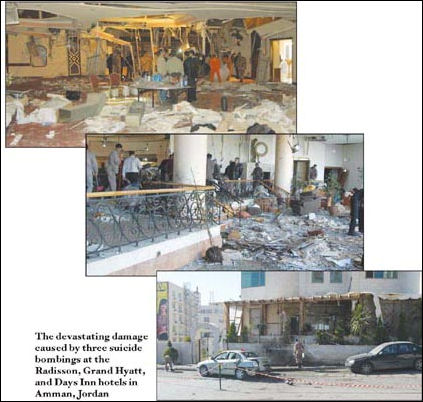
Jordan hotel bombing After September 11th attacks became more scattered, and in some cases amateurish. But there were a lot more of them and they were much more difficult to get wind of and prevent. Al-Qaida relocated from Afghanistan to Pakistan. A lot of energy was directed towards Iraq.
On September 13, 2001, a Frenchman of Algerian background was arrested in Paris. He said he was involved in a plan to destroy the U.S. embassy on Paris. In December 2001, a Sudanese man with possible links to Al-Qaida fired a Stinger missile at a U.S. warplane neat Prince Sultan airbase in Saudi Arabia.
In May 2002, Jose Padilla, an American citizen and former gang member who trained at Al-Qaida camps, was involved in plot to detonate a radioactive “dirty bomb” in the United States.
In October 2002, a French supertanker was struck by an explosives-laden boat in the Gulf of Aden, causing the tanker to spill oil into the sea. Some of the oil caught fire, sending a thick black cloud of smoke into the sky. The attack was similar to that of the Cole except it took place further out at sea. It occurred around the same time as the attack in Bali. One member of the 25-person crew was killed. The other 24 were rescued by helicopter.
The 157,833-ton tanker, the Limburg, was carrying 400,000 barrels of Saudi crude. The explosion left a hole 11 meters high, 8 meters wide and 7 meters below the surfaces. The tanker was crippled but didn’t sink. More than 90,000 barrels f oil leaked into the Gulf of Aden. Most supertankers have small crews and light security. There were worries that similar attacks might be conducted in busy shipping around the Red Sea and Persian Gulf.
Shoe Bomber
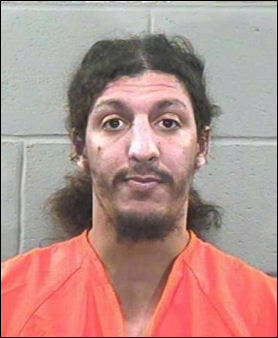
Richard Reid
December 2001, Richard Reid, the so called shoe bomber, tried to ignite a bomb in his shoe on a flight between Paris and Miami but was discovered by flight attendants, wrestled to the floor by passengers and subdued with an injection of sedatives by a doctor. A British citizen, he said he was a member of Al-Qaida and was sentenced to life in prison in 2003 after pleading guilty in his trial.
FBI experts were surprised with how well the bombs were made and concealed in Reid’s black suede sneakers. Each shoe contained 4 ounces of PETN (pentaerythritol tetranitrate), a powerful explosive used in construction and the military, mixed with a plasticizer and shaped into putty- like strips and made into a detonator chord. Packed around the PETN was TATP (triacetone-triperoxide), a white powder chemical explosive that can be made at home. If the fuses had been light, they would have set off the TATP which would in turn would detonate the PETN. Tests showed of Reid’s bomb had gone off it could have blown a hole in the fuselage and brought down the plane.
Reid was born in Britain to a white woman and half-black Jamaican man. He converted to Islam while in prison serving time for mugging an elderly person and was active at a mosque in Brixton. He spent some time at Islamic schools in Pakistan and terrorist camps in Afghanistan.
Al-Muhajiroun is a Muslim extremist group within Britain. It takes an anti-American stance and advocates jihad. A number of its members have been connected with terrorism. Among those who attended Al-Muhajiroun meetings were Richard Reid, the shoe bomber, and Britons captured in Afghanistan fighting for the Taliban.
Synagogue Attack in Tunisia in 2002
On April 11, 2002, an explosion caused by suicide bomber in a truck near the old and famous Ghrba synagogue on the island of Jerba killed 21 people — 14 German tourists, a Frenchman, six Tunisians and the suicide bomber. The synagogue is the oldest in Tunisia. The attack took place when the synagogue was empty. No Jews were killed.
The government initially claimed the blast was the result of an accident. It took back that assertion when Al-Qaida claimed responsibility for the attack a few weeks later. Al-Qaida rarely takes claim for an attack. It seemed to have done so in this case because the attack didn’t generate enough media attention.
The suicide bomber that carried out the mission was Nizar Nawat, a 24-year-old Tunisian high school drop out who had been trained at an Al-Qaida camp in Afghanistan. With $20,000 he received from Al-Qaida, he bought an old truck, got his uncle to install a large tank on it and filled that tank with propane.
Nawat relatives said he showed little interest in Islam, drank alcohol and wore short pants. No one suspected he was a terrorist. He is believed to have turned to Islamic militancy after he worked nine months in South Korea but was cheated out of his wages by his employer and ended up in Montreal, where he befriended some radical Algerians.
On the morning of April 11 Nawat parked the truck on a narrow road near a group of tourists standing near the synagogue. When a policemen approached the truck it exploded. A woman who was in the synagogue told the Independent, “I heard this sound, a huge bang...Some of the windows blew in. I didn’t know what was going on...Then fire seemed to pour into the place. “
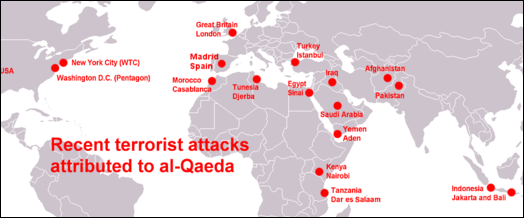
Riyadh and Casablanca Bombing in 2003
On May 12, 2003, a triple suicide attack on a residential complex in Riyadh, Saudi Arabia, killed 35 people, including nine Americans. The bombing occurred just four days before a series of explosions caused by suicide bombers in Casablanca left 30 dead. Al-Qaida is believed to have had a hand in both the attacks. They both occurred after a tape by Osama bin Laden was played on Arab televison in which both Morocco and Saudi Arabia were listed as “apostate” Arab nations. Saudi Arabia is one of the nations, along with Morocco, Jordan, Yemen and Pakistan that Osama bin Laden accused of having an “oppressive, unjust, apostate ruling government” and being “enslaved by America” and therefore “eligible for liberation.”
May 16, 2003 five almost simultaneous bombs exploded in restaurants and hotels frequented by foreigners in the Moroccan city of Casablanca, killing 33 people (plus 12 suicide bombers) and injuring more than 100. Casablanca is believed to have been selected as a target because it is one of the few places left in the Arab world with a sizable Jewish community.
The five separate explosions occurred within 20 minutes of one another. One explosion occurred at a Jewish community center. Another occurred at a Spanish club, where 18 people died. The others were at the Hotel Farrah, a Jewish-owned restaurant and a public fountain near a Jewish cemetery. Most of the victims were Muslim Moroccans. Two of the dead were French. One was Spanish. The attack shattered Morocco’s image as a peaceful, liberal, tolerant Arab nation.
An employee at the Hotel Farah told the New York Times, he came of the hotel and saw panicked guests attacking one of the terrorists. “People wanted to beat him up, but I pushed him to the ground and we held him until the police came.” He said two other attackers fled after one of them threw a bomb into the lobby. A bellman was killed. “I gathered up his body parts: his head, his limbs, all the pieces. He had four children,” the employee said.
A customer at the Spanish club told the New York Times : “They came in and cut the doorman’s throat, then killed a customer who came across them, came in and detonated their bombs. Tables were overturned, something caught fire, an awning, and then everything went up in flames.
Terrorists Who Carried Out the Attack in Casablanca

Marrakech Argana Bomb Site 2011 The attacks in Casablanca were carried out by 14 Moroccan men divided into five teams. They were all poor. Most were students. One was a parking lot attendant. Some came from the Sidi Moumen shanty town in Casablanca, and were members of three Muslim extremist groups. Many were recruited not long before the attacks at local mosques.
The men carried the explosives in backpacks and were each given a new Casio watch with instructions to set off the explosives off at exactly 9:30pm. They prayed before taking taxis to their targets. Three of the bombers survived apparently because they chickened out at the last minute. Much of the information about the attack was provided by them.
Moroccan investigators believe the attackers were hired hands recruited to carry out the attacks and were part of an international group — presumably Al-Qaida — that provided them with training and explosives. According to one account the operation was planned by Abu Musab Zarqawi, a Jordanian Al-Qaida member who later became infamous in Iraq. He received between $50,000 and $100,000 to carry out the attack. The simultaneous explosives were an Al-Qaida trademark. The bombs were like those described in Al-Qaida training manuals are believed to have been made with the help of an Al-Qaida bombmaker sent to Morocco.
There was a certain amateurish quality to the attacks. The terrorists seemed to have gotten two fountains mixed up. Instead of setting off their bomb at a fountain outside the entrance of a Jewish cemetery, which appears to have been the target, they set it off at a small public fountain two blocks away and managed to only kill themselves and three young Muslims. The attackers also struck a Belgian consulate when it seemed the real target was a Jewish-owned restaurant. The attack on the Jewish community center occurred on the Jewish Sabbath when the center was closed and empty. Even though Jews were thought to be the primary target no Jews were killed.
Crackdown After the Terrorist Attack in Casablanca
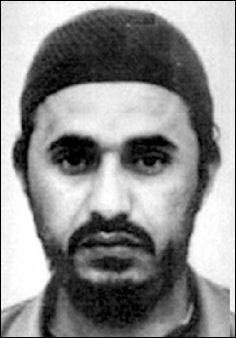
Zarqawi After the terrorist attack in Casablanca, security forces arrested dozens of people suspected as being Islamic militants. In one raid a homemade bomb and materials and guides for making bombs were discovered. Among the men that were arrested were 40 other men who were allegedly ready to carry out suicide attacks in the following weeks at tourist destinations in Morocco and the beaches of Agadir and Essaouira.
In June, 2003, Moroccan authorities announced that they had captured the “general coordinator” of the attack in Fez but then said he died of a heart attack while being taken to the hospital. Around the same time 16 men were charged in connection with the bombing. Even though Moroccan security forces carefully watch suspected Al-Qaida members, none of the arrested men or suicide bombers were known to them until after the Casablanca attack Fifty-two suspects were put on trial in connection with the bombings. The trial was scheduled for late July, 2003 but was postponed.
Hundreds of thousands of Moroccans, many chanting “No to terrorism” and carrying portraits of King Mohammed VI, marched in the streets, to protest the bombings. A few weeks after the attack, the parliament approved a broad, anti-terrorism bill that had been strongly criticized by human rights group. Many experts who examined the Casablanca case said the only way to truly combat terrorism is to do something about poverty.
Mastermind of the Riyadh and Casablanca Attacks in 2003
Craig Whitlock wrote in the Washington Post: “In the post-Sept. 11 world, Karim Mejjati was the perfect undercover al Qaeda operative. The former medical student from Morocco could speak several languages, had many passports and excelled at building bombs. He was also good at avoiding attention as he crisscrossed four continents to organize a wave of catastrophic attacks. On May 12, 2003, an al Qaeda network that investigators say was put together by Mejjati in Saudi Arabia blew up three residential compounds for foreign workers in Riyadh, leaving 23 dead. Less than a week later, about 3,000 miles away, suicide bombers trained by Mejjati carried out the deadliest terrorist attacks in Moroccan history, killing 45 people in Casablanca. [Source: Craig Whitlock, Washington Post, May 2, 2005]

Mejjati
“For the next two years, authorities in the Middle East, North Africa, Europe and North America pressed a secret but intensive global manhunt for the French-schooled suspect, fearing that he had set up other al Qaeda sleeper cells that had yet to be activated. Saudi Arabia put him near the top of its list of most wanted terrorism suspects. In Morocco, he was sentenced in absentia to 20 years for the Casablanca bombings. The FBI named him in a global anti-terrorism alert, warning that he was suspected of planning attacks in the United States.”
“According to investigators, his success in organizing terrorist networks in multiple countries is clear evidence that al Qaeda can still order devastating attacks around the world, even though most of its commanders have been killed or on the run since Sept. 11, 2001. The search for Mejjati, 37, ended last month in a small town in the heart of Saudi Arabia when he was killed in a gun battle with security forces who stumbled on his hideout. Now, investigators trying to retrace his footsteps acknowledge that they still do not know how many more sleeper cells the well-educated explosives expert may have created.
“In interviews, security officials in Saudi Arabia said that Mejjati was dispatched from Afghanistan by top al Qaeda leaders in 2002 to help recruit and train a network of cells dedicated to overthrowing the Saudi royal family. Saudi officials said Mejjati served as the general strategist to the network's first chief, Yusuf Ayeri, who reported directly to al Qaeda founder Osama bin Laden. Starting with the May 2003 bombing in Riyadh, the network has rattled the kingdom with a series of explosions, kidnappings and beheadings that have taken more than 90 lives and contributed to a global rise in oil prices.”
“In Morocco, counterterrorism officials said Mejjati provided explosives training to a cell of Islamic radicals recruited from the slums surrounding Casablanca. At first, investigators thought the operation was conceived and planned locally. But a suspect who later divulged Mejjati's name to interrogators led them to conclude that those responsible for the attacks were taking their cues from al Qaeda's top leadership.
“Some U.S. and European officials say they believe Mejjati may also have been involved in the planning of the March 11, 2004, bombings of four commuter trains in Madrid in which 191 people were killed and more than 1,800 were wounded, although other investigators disagree. Spanish authorities have not issued an indictment against him. A local cell consisting mostly of Moroccan immigrants is believed to have carried out the attacks, but Spanish investigators have been unable to determine whether they acted on their own or took orders from al Qaeda middlemen such as Mejjati.
Life of the Riyadh and Casablanca Bombing Mastermind
Craig Whitlock wrote in the Washington Post: “The son of a French mother and Moroccan father, Mejjati had a privileged upbringing in Casablanca. He attended an exclusive French-language school and, at his father's urging, applied to medical school in France. He moved to France in the early 1990s to study, but dropped out of school and became more devout as a Muslim, according to neighbors and relatives in Casablanca. When he returned to Morocco a few years later, he dressed in Afghan-style clothes and wore a long beard, a style that made him stand out in his family's cosmopolitan neighborhood, next to the city's old Jewish sector. [Source: Craig Whitlock, Washington Post, May 2, 2005]
“In the late 1990s, he caused a small stir in the neighborhood by loudly berating a young man who had put his arm around his girlfriend in public, neighbors recalled. When visitors came from out of town, he would insist that he and his bushy-bearded male friends sleep in cars on the street while the women stayed in his small two-room apartment. "We thought, well, he's weird, but what can he possibly do?" said one neighbor, who spoke on condition of anonymity, saying he didn't want to antagonize Mejjati's friends or the Moroccan security services. "He was always with strange people, but not to the point where we were worried."
“Mejjati married a Moroccan woman, with whom he had two sons, but the family rarely interacted with others. As his sons grew up, Mejjati increasingly spent his time traveling. One resident from his apartment building said he recalled seeing Mejjati only twice after the Sept. 11, 2001, attacks, though he never suspected that he might be involved in militant groups.
Attacks in Istanbul, Egypt, North Africa , the Middle East, India and Pakistan

Marriot Hotel bombing
Islamabad Pakistan
On November 15 and 20, 2003 a Turkish cell of Al Qaida set off truck bombs at two synagogues, the British consulate and a British bank in Istanbul, killing 63 people, including the British consul, and leaving hundreds injured. In the first attack two suicide truck bombs attacks on two synagogue in Istanbul left 23 dead. A group called Abu Hafs al-Masri Brigade took responsibility. The second attack, on the British Consulate and HSBC in Istanbul, left 30 dead and 450 wounded. A group called the Islamic Great Eastern Raider Front took responsibility.
On July 23, 2005 a series of suicide bombings hit the Egyptian tourist resort of Sharm el-Sheikh, killing 68 people. On November 9, 2005, three suicide attacks on hotels in the Jordanian capital of Amman claimed 60 lives. On April 24, 2006, twenty people wre killed and 90 injured when suicide bombers hit the Egyptian coastal resort of Dahab.
On August 14, 2007, more than 400 people were killed when four truck bombs exploded in northern Iraq in an attack US authorities link to Al Qaeda.
December 11, 2007 two suicide blasts in Algiers kill at least 41 people, including 18 UN staffers, three of them foreign nationals. The attacks are claimed by the Maghreb branch of Osama bin Laden's Al Qaeda network. On September 17, 2008 an attack on the US embassy in Sanaa, Yemen, kills 16 people. On November 24, 2010 a A suicide car bomber killed 23 Shiites at a religious procession in Yemen, an attack linked to Al Qaeda.
In 2008, 10 gunmen launched an attack in Mumbai that killed 166 people and injured more than 300 in three luxury hotels, a railway station and restaurants. Al-Qaida is believed to have had some links to the attack. On September 20, 2008 a huge explosion brought down a large section of the Marriott Hotel in Islamabad, killing at least 60 people. Al-Qaida is believed to have had some links to these attacks.
Underwear Bomber
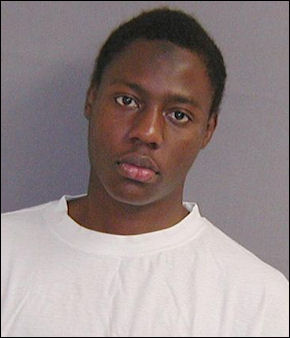
Underwear bomber
Umar Farouk Abdulmatullah
On Christmas Day 2009, a young Nigerian man, Umar Farouk Abdulmatullah, was arrested after a failed attempt to detonate a bomb on board a Northwest flight between Amsterdam and Detroit as the plane was landing. In trying to set off the bomb that was hidden in his pants he fumbled with detonator. Other passengers realized something was amiss when they smelled smoke and heard a noise like a firecracker. They wrestled him to a stop. Afterwards Abdulmatullah was labeled the “underwear bomber.”
Arabian Peninsula (AQAP), a Yemen-based subsidiary of Al-Qaida, took credit for the attack. Abdulmatullah told investigators that operatives in Yemen gave him an explosive devise and taught him how to detonate it. Abdulmatullah’s father had warned U.S. security officials of his son’s growing radicalism.
Abdulmatullah had 80 grams of PETN — industrial explosives also used by the shoe bomber Richard Reid in 2001 and foiled parcel bomb in 2010 — sewn into the crotch area of his underwear. The detonator was made with a plastic syringe. There were 253 passengers and 11 crew members aboard the flight. At least one man climbed over the others to subdue the bomber who was taken off the plane with his pants cut off and legs burned. One passenger told AP, “it sounded like a firecracker in a pillowcase. First there was a pop, and then there was smoke.” Another passenger said he saw a glow and smelled smoke and “a young man behind me jumped on him....Next thing you know there was a lot of panic.”
Joby Warrick and Peter Finn wrote in the Washington Post: “Abdulmutallab, an engineering student at University College London, was apparently recruited because he had a U.S. visa and no record of ties to terrorist groups. Officials say that he was trained and equipped by one of al-Qaeda's rising affiliates, al-Qaeda in the Arabian Peninsula, and that he had a bomb made of a common military explosive sewn into his underwear, deliberately designed to thwart the kinds of safeguards put in place after 9/11. [Source:Joby Warrick and Peter Finn, Washington Post, February 8, 2010]
In a trial that ended in March 2012 Abdulmatullah was given a mandatory life sentence. He had pleaded guilty to the chrages and defiantly shouted “a day of victory” after his sentence was read.
Attack on CIA Base in Afghanistan Kills Nine CIA Officers
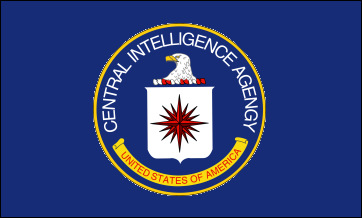
CIA flag
On December 30, 2009, a suicide bomber attacked Forward Operating Base Chapman, a major CIA base in Khost, and killed seven CIA officers, including the chief of the base. The base is located near the eastern Afghan city of Khost, in a stronghold of the Taliban movement. One of the main tasks of the CIA operatives stationed at the base was to provide information for drone attacks against targets in Pakistan. Seven CIA operatives, including the chief of the base, and an officer of Jordan's General Intelligence Directorate were killed, and six others were seriously wounded when the attacker detonated a bomb he was carrying. The bombing was the most lethal attack against the CIA in more than 25 years. Only the 1983 United States embassy bombing Beirut surpasses the Chapman attack in number of CIA officers killed. [Source: Wikipedia]
The suicide bomber was later identified as a triple agent — Humam Khalil al-Balawi, a Jordanian doctor — loyal to Al-Qaida. As he had already made a number of visits to the base, the attacker was considered trusted enough by base security not to be searched on arrival at the gate. It was not until he was standing just outside a building well within the compound that he was about to be searched, whereupon he detonated explosives attached to his body.
There was considerable confusion after the attack about the motivations of the attacker and the source of its support. It was not clear whether conflicting claims of responsibility indicated that Pakistani Taliban, Afghan Taliban, and al-Qaeda were working independently from each other. U.S. officials said that their investigators have yet to determine which of the groups organized the attack. They believed that the Haqqani network, which operates in the region, actively assisted the bombing. Michael Scheuer, a former head of the CIA's Bin Laden Issue Station, said that it would be inconceivable that the attack could have been carried out without the knowledge of the Haqqani network. Former CIA officials said that Osama bin Laden's inner circle would have helped plan the attack.
A video released in the days after the attack showed al-Balawi stating that he was carrying out the attack in response to the death of Baitullah Mehsud, the Pakistani Taliban leader who was killed by a U.S. drone in August 2008. The CIA officials based at Forward Operating Base Chapman were at the center of the drone campaign, according to intelligence officials, and they were looking for informants to help them find senior al Qaeda and Haqqani leaders.
Triple Agent and the Attack That Kills Nine CIA Officers
In a review of the book “The Triple Agent: The al-Qaeda Mole who Infiltrated the CIA” by Joby Warrick, Steve Hendrick wrote in Washington Post: “The book’s anti-protagonist is Humam Khalil al-Balawi, a mild-mannered Jordanian doctor by day but a pseudonymous blogger of terroristic screeds by night. So influential was he among jihadists that in early 2009 the Mukhabarat, the Jordanian secret police, went to the trouble of uncovering his identity and, after roughing him up, turned him into a double agent.” [Source: Steve Hendricks, Washington Post, July 22, 2011; “The Triple Agent: The al-Qaeda Mole who Infiltrated the CIA” by Joby Warrick (Doubelday, 2011)]
“Balawi was sent to lawless northwestern Pakistan, where he infiltrated the upper levels of the Pakistani Taliban in an unbelievably short time. At least, it should have been unbelievable. But the Mukhabarat and its bedfellow the CIA were so eager for an inside man that they ignored skeptics who questioned his rapid ascent. After Balawi sent a grainy video of himself with Atiyah Abd al-Rahman, a top aide to Osama bin Laden, he became known in Langley as the “golden source.” How al-Qaeda let such a video be taken should have been another cause for skepticism. So too Balawi’s nearly miraculous claim shortly thereafter that Ayman al-Zawahiri, al-Qaeda’s number two, asked him to be his doctor.
“Warrick, a Pulitzer-winning reporter who covers spies for The Post, says Balawi may actually have given some useful information to the CIA — information, for example, that let the agency kill several Taliban via air strikes. But the only definite killing that Warrick reports is one in which the Taliban asked Balawi to prove his ties to the CIA by calling in an air strike on a decoy, a foot soldier posing as a Taliban leader, sacrificed to the cause.
“Among the protagonists are the Mukhabarat officer who “turned” Balawi, the officer’s CIA counterpart and close friend who doubted Balawi had been turned but went to Khost nonetheless, and the CIA chief in Khost who disregarded concerns about Balawi’s allegiance and let him into the base unsearched so as not to offend him. A lesser presence is then-CIA director Leon Panetta, now secretary of defense, who proved the ultimate overeager believer in Balawi.” Warrick “burrows deep inside not only the CIA, which might be expected, but also the Mukhabarat and ISI, Pakistan’s main spy agency. To take just one example, he unearths in some detail how one Taliban faction wanted to kill Balawi on suspicion that he was a CIA spy while another prevailed in protecting and elevating him.
“Balawi’s story ends in what was supposed to be his debriefing outside the Afghan city of Khost. “On Dec. 30, 2009, Balawi was whisked past the sentinels at Forward Operating Camp Chapman, whereupon he stepped out of his car, mumbled “La ilaha illa Allah” — “There is no God but God” — and blew up himself and nine CIA and military officers and contractors. With them died the hope for a golden source.
Books: The Triple Agent: The al-Qaeda Mole who Infiltrated the CIA by Joby Warrick (Doubelday, 2011]
Parcel Bombs on Airplanes from Yemen in October 2010
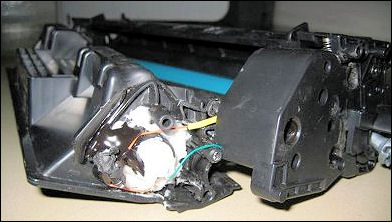
Toner cartridge bomb In October 2010, just before mid-term elections in the United States, explosives planted in parcels on their way from Yemen to the United States were intercepted in Dubai and Britain. The bombs, which used explosives that can not be detected with conventional X-ray machines and sniffer dogs, appear to have been designed to destroy the planes in flight and not to strike the US targets to which they were addressed. The devises were found with the help of Saudi intelligence that was tipped off by an Al-Qaida insider, former Guantanamo inmate Jabir al-Fayfi, a Saudi double agent.
British officials have said the bombs were powerful enough to bring down a plane in flight. Reuters reported: “One of the packages was found on a United Parcel Service cargo plane at East Midlands Airport, about 160 miles north of London. The other was discovered at a FedEx Corp facility in Dubai. UPS and FedEx, the world's largest cargo airline, said they were halting shipments from Yemen. One U.S. official and some analysts speculated that the parcels may have been a test of cargo screening procedures and the reaction of security officials. "This may be a trial run," the U.S. official said. [Source: Reuters, Phil Stewart and Adrian Croft, October 29, 2010]
AFP reported: “British anti-terror police disarmed an Al-Qaeda bomb just 17 minutes before it was due to detonate, French Interior Minister Brice Hortefeux said. "There were parcel bombs from Yemen heading for the United States, and I can tell you, for example, that one of these parcels was disarmed 17 minutes before the planned explosion," Hortefeux told France 2 television. “The packages were addressed to synagogues in Chicago. Hard-to-detect explosive PETN hidden in printer ink cartridges were uncovered in Dubai and Britain's East Midlands Airport. The two bombs contained 300 grams to 400 grams of PWTNm an industrial explosive. The explosives used cell phone technology as detonators. [Source: AFP, November 5, 2010]
Terrorist Group Behind the Parcel Bomb Plot
AP and Fox News reported: “Al Qaeda in the Arabian Peninsula, the terrorist group's branch based in Yemen, claimed responsibility for the failed mail bomb plot on cargo planes bound for the United States. The group's statement, obtained by the NEFA foundation, which tracks terrorists worldwide, is on a well known website featuring pictures of UPS and FedEx and one of the bombs housed in a toner cartridge of a Hewlett-Packard P2055 LaserJet desktop printer.” The explosives were in sealed cartridges difficult for X-ray machine to distinguish from ones carrying cartridge powder
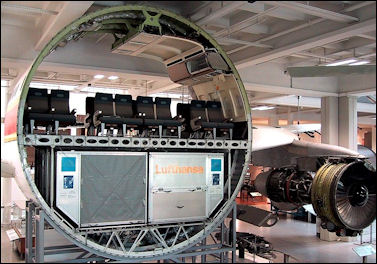
Airbus A300 cross section,
showing cargo hold "We say to Obama: we pointed three attacks to your planes within one year, and we will continue Allah-willing to direct our attacks on the American interests and the interests of America's allies," the group said, according to an English translation of the Arabic. [Source: AP, Fox News, November 5, 2011]
The chief suspect was Ibrahim Hassanal-Asiri, a Saudi bombmaker whose brother was a suicide bomber who tried to kill Saudi counter-terrorism chief Prince Mohammed bin Nayef. He is believed to be to have been killed in drone strike in Yemen in September 2011 along with jihadist Anwar al-Awlaki and other top Al-Qaida operatives. AFP reported that Washington believes Hassan al-Asiri is thought to be a senior member of Al-Qaeda in the Arabian Peninsula (AQAP), a Yemen-based subsidiary of Al-Qaida. [Source: AFP, November 5, 2010]
According to the Yemen-based Al-Qaida Internet magazine Inspire: The goal of what was dubbed Operation Hemorrhage is not just to bring down aircraft, but to force Western governments to spend huge sums for new security measures, further burdening their faltering economies. “We will continue with similar operations and we do not mind at all in this stage if they are intercepted," one article said. "It is such a good bargain for us to spread fear amongst the enemy” in exchange for a few months of work and few thousand bucks." The magazine cover shows a blurred photo of a United Parcel Service plane and the sum $4,200 in large type — the supposed cost of the failed plot. [Source: Bob Drogin, Los Angeles Times, November 26, 2010]
An article inside breaks down the bombers' budget: "Two Nokia phones, $150 each, two HP printers, $300 each, plus shipping, transportation and other miscellaneous expenses." Photos show the LaserJet cartridges used in the plot as well as a torn copy of Charles Dickens' novel "Great Expectations," which was packed in one of the parcels. The title was chosen, the author explained, because "we were very optimistic about the outcome of this operation."
Parcel Bombs Plot and Air Security

Authorities searched UPS and FedEx planes and some UPS trucks in a handful of American cities, all of which were carrying cargo from Yemen. The plot made light of how easy it was to use the global cargo network to transport a bomb and the high cost and weakness of tryng to prevent such an attack. At the time of the attack about 65 percent of packages entering the United States were screened for explosives, and even then some of the screening was not good enough to find the kind of explosives sent from Yemen. Improving security, according to one report, would considerably slow the flow of goods and slow air passenger service.
AFP reported: The British government announced an urgent review of air freight security in the wake of the plot. It has also ordered the suspension of all air freight from Yemen and unaccompanied air freight from Somalia.Britain's interior minister Theresa May said in a speech on Wednesday that the bomb was "deeply concealed" in a printer cartridge and connected to a hidden power source in sections of a mobile telephone. "The specifics of this attack -- notably the type of device and how it was concealed -- were new to us," but the principle was similar to the device that destroyed a Pan Am jumbo flight over Lockerbie, Scotland in 1988, she said. "It could have destroyed the aircraft on which it was being carried, over the UK, over the US or on the ground," she said. [Source: AFP, November 5, 2010]
According to AP: New jumbo jets flying in from overseas -- like the Boeing 777 -- have "cavernous" bellies where freight is stored, he said. Most countries require parcels placed on passenger flights by international shipping companies to go through at least one security check. Methods include hand checks, sniffer dogs, X-ray machines and high-tech devices that can find traces of explosives on paper or cloth swabs.But air shipping is governed by a patchwork of inconsistent controls that make packages a potential threat even to passenger jets, experts said Saturday. Security protocols vary widely around the world, whether they're related to passenger aircraft or cargo planes. [Source: Gregory Katz and Samantha Bomkamp, Associated Press, October 31, 2010]
Attack on Japanese Tanker in November 2008
In August 2010, a 160,292-ton Japanese tanker, M. Star, was damaged by an explosion while traveling through Straits of Hormuz. Damage to the hull appeared to have been caused by explosives from a small ship that passed near the tankers. Terrorists or separatist were suspected. An Al-Qaida-linked group — Abdullah Azzam Brigades — claimed credit for the attack, saying explosives were detonated by a suicide bomber damaged the hull. In November 2010, the U.S. government confirmed that the group was behind the attack. Experts seem to think a Japanese tanker was not targeted intentionally; just any old tanker would do.
The Yemeni-based group Abdullah Azzam Brigades is mainly active in the Egyptian Sinai and Lebanon and is thought to be composed mainly of Arabs who fought in the Iraq war under Iraq-based Al-Qaida leader Abu Musab al-Zarqawi. The group was previously thought incapable of such a bold attack.
Image Sources: Wikimedia Commons
Text Sources: New York Times, Washington Post, Los Angeles Times, Times of London, The Guardian, National Geographic, The New Yorker, Time, Newsweek, Reuters, AP, AFP, Wall Street Journal, The Atlantic Monthly, The Economist, Global Viewpoint (Christian Science Monitor), Foreign Policy, Wikipedia, BBC, CNN, NBC News, Fox News and various books and other publications.
Last updated July 2012
